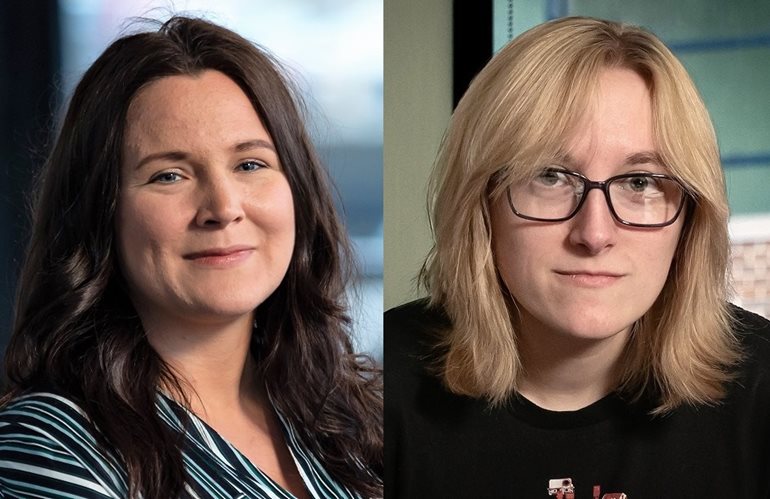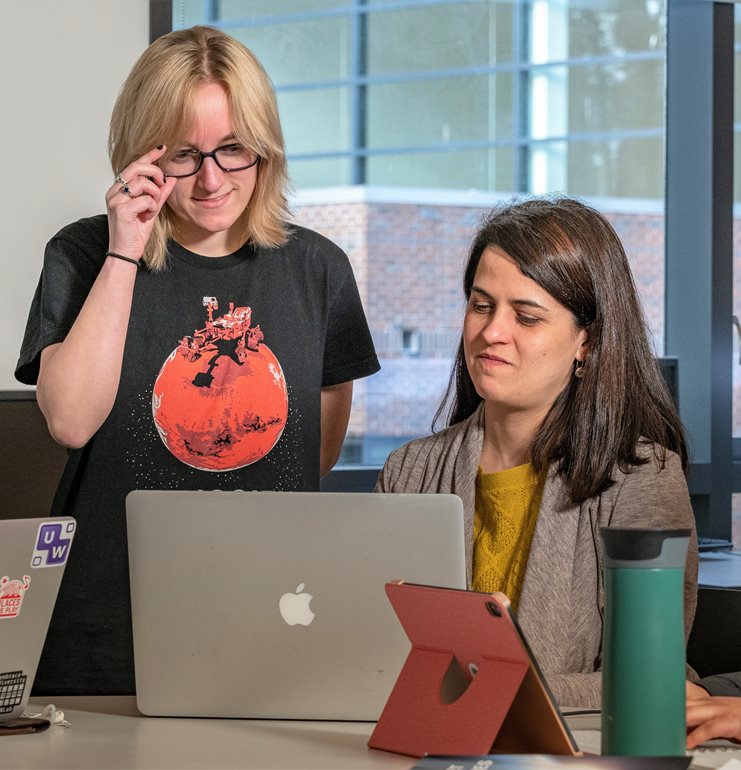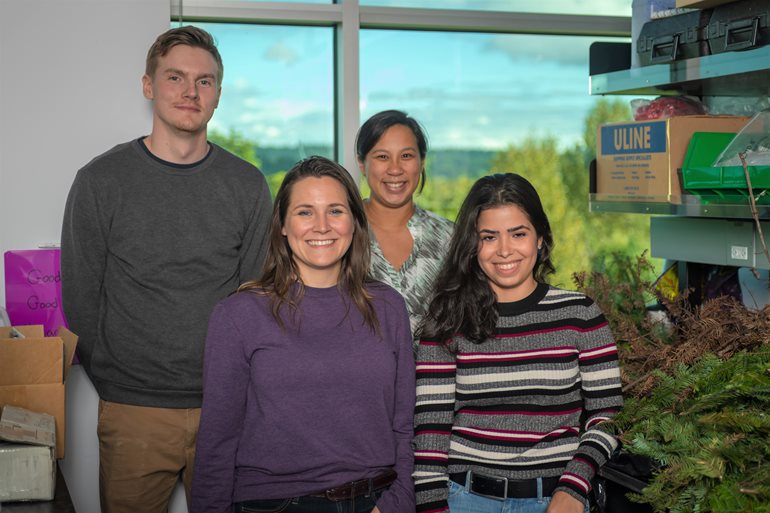
From the blast zone of a volcano to planets outside our solar system, Mary Gates scholarships are helping University of Washington Bothell students expand their research.
One of the recipients of the scholarships this year is Katey Queen, a senior majoring in Biology. She is researching plant succession at Mount St. Helens with Cynthia Chang, an assistant professor in the Biological Sciences Division of the School of STEM.
Another recipient is Wynter Broussard, a senior majoring in Physics. She is researching the atmosphere of exoplanets with Paola Rodríguez Hidalgo, an assistant professor in the Physical Sciences Division of the School of STEM.
Light-years away

Broussard is contributing to a collaboration that Rodríguez Hidalgo started with Stephen R. Kane of the University of California, Riverside. He created a website called the Habitable Zone Gallery. It’s a database of planets that orbit stars beyond our solar system.
One way they are detected is when a big planet orbits close to its sun. So, Broussard and two other members of the Exoplanet Research Group have been looking at planets known as hot Jupiters. Specifically, they are looking at atmospheric signs of sodium and potassium that are easier to detect than water, which is the next step, said Rodríguez Hidalgo.
“We’re not saying we’re going to find life, although studying the atmospheres of exoplanets, looking for these biosignatures, is most likely how we’ll find life at one point,” she said.
The research has launched Broussard higher into the academic world. She attended the American Astronomical Society conference in January in Honolulu. “Researchers in my field came up to my poster and talked to me about my research,” she said. “That was a really great experience.”
Science on the edge of fiction
At the end of March Broussard also is presenting at the National Conference on Undergraduate Research at Montana State University in Bozeman. The Mary Gates scholarship helps her focus on research she’d like to continue in a career, said Broussard, who plans to attend graduate school in physics, astronomy or astrophysics.
“Ever since I found out what they were, exoplanets have fascinated me. These planets outside our solar system are so far away, their atmospheres can be so small, and yet we can still detect them and characterize them,” she said. “All the possibilities for the different kinds of worlds that can exist in our universe just blow my mind.”
Finding an Earth-like planet with an oxygen atmosphere would be cool, but there’s even more to look for — like science fiction coming to life, said Broussard, a fan of Capt. Janeway in the Star Trek franchise.
“There are rogue planets, which I think is the coolest name,” Broussard said. “They don’t orbit a star. They’re off in the universe. I would love to find a better way to identify them.”
40 years after the big blast

Queen is contributing to Chang’s ongoing research into how plants are returning to Mount St. Helens, just a mile or two from the crater left by the 1980 eruption. Queen made her first camping trips to the site in the summer of 2019 with fellow students Alex Wachter and Isabel Rodriguez. Wachter, who received a Mary Gates scholarship last year, was the team leader. This summer, Queen is the leader of a new team that’s forming.
The blast zone is now an alpine meadow of grasses and flowers with scattered trees. The researchers maintain, monitor and measure changes in 40 test plots. Each has a noble fir tree and sub areas of plants for testing the effects of shade, nitrogen and carbon.
Chang is on leave winter quarter but is still working with Queen, who plans to lead the first backpacking trip to the mountain as soon as the snow melts. In addition to camping gear, the team has to carry in shade cloths with plastic pipe frames.
At UW Bothell only a year, Queen say she is making a career change from her plan to be a veterinary technician.
“I wanted to do a little bit more. I wanted to be the lead, not just the nurse, not just the X-ray tech, the anesthesiologist,” she said. “I wanted to be discovering more, adventuring more.”
Queen loved the first course she had with Chang, Plant Ecology, which had lab classes in the campus wetlands. She hopes for more field work in graduate school. And, an ideal job would be one where she conducts outdoor research on a conservation or ecology project in the summer and spends the winter on data analysis.
Her scholarship money will help cushion the expenses of going to the mountain and also traveling to the Ecological Society of America conference in August at Salt Lake City. Queen will present a poster with Wachter and Rodriguez.
Powerful recognition
In addition to the financial help, the Mary Gates scholarship is rare recognition for undergraduates, Queen said.
“To get under the direction of somebody who has a funded research project wasn’t an opportunity when I was in community college,” she said. “So, hopping into that and taking advantage of the opportunity right off the bat was monumental in my path toward graduate school.
“This experience, as well as the Mary Gates scholarship, is probably going to put me ahead of the game,” Queen said. “The recognition is very powerful in the UW community that I’d like to stay in.”
Mary Gates Research Scholarships are awarded each year to UW undergraduates engaged in faculty-guided research. The awards provide $5,000, disbursed over two academic quarters. The scholarships were endowed by Bill and Melinda Gates in 1995 to honor the memory of his mother, Mary Maxwell Gates, who served as a UW regent from 1975 to 1993.



